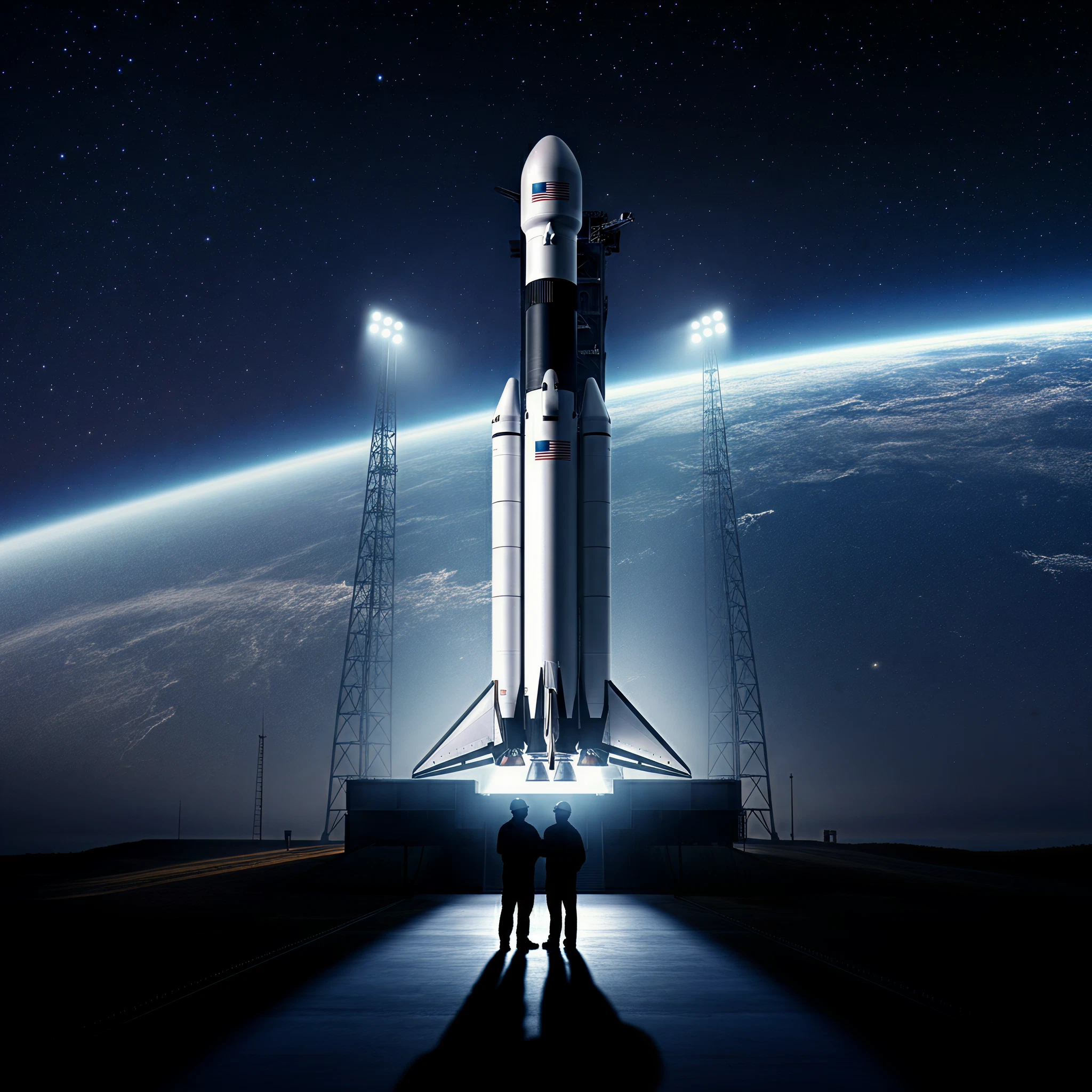SpaceX’s much-anticipated Falcon 9 launch scheduled for May 19, 2025, from Cape Canaveral Space Force Station was halted just moments before liftoff. While the setback disappointed thousands of enthusiasts and viewers worldwide, it underscores SpaceX’s unwavering focus on ensuring safety and mission success.
Key Events Leading to the Scrub
Initial Launch Preparation
SpaceX’s Falcon 9 rocket carrying 23 Starlink V2 Mini satellites was set to launch at 11:58 p.m. EDT on May 19, 2025. The payload included cutting-edge satellites, 13 of which will feature Direct to Cell connectivity, a step forward in expanding global communications.
Pre-Flight Checks
Prior to the planned liftoff, SpaceX completed its series of rigorous tests and verification processes. Despite a forecast showing a 95% chance of favorable weather conditions from the 45th Weather Squadron, SpaceX’s alert systems detected an issue during the final countdown.
Scrub Decision
At T-minus 2.5 minutes, an automated abort sequence was triggered. This decision was later shared by SpaceX, citing an “auto abort just prior to T-0.” Details about the exact issue remain undisclosed, but the spacecraft and payload were confirmed to be in good health.
New Launch Schedule
SpaceX announced a new target window for launch “no earlier than” May 20, 2025, at 11:18 p.m. EDT. Teams will use this additional time to resolve technical hiccups, conduct further checks, and prepare for another attempt.
The Incredible Engineering Behind Falcon 9
Falcon 9 is a marvel of modern aerospace engineering. Here are some of the key technical details that set it apart:
- Two-Stage Reusable Rocket: Designed for efficiency and cost-effectiveness, Falcon 9’s first stage is reusable, capable of precise landings on droneships such as “Just Read the Instructions.”
- Merlin Engines: Powered by SpaceX’s proprietary Merlin engines, it uses RP-1 and liquid oxygen for propulsion.
- Advanced Avionics: Precise landing and deployment are ensured with Falcon 9’s advanced avionics.
- Versatility: Capable of transporting both crew and cargo, it suits a variety of missions, from delivering satellites to carrying astronauts aboard the Dragon spacecraft.
For this specific mission, SpaceX aimed to debut Falcon 9 booster 1095, marking the fourth new booster launch of the year. After liftoff, the booster is slated to land on the droneship “Just Read the Instructions” for the 121st time, if all goes as planned.
What’s Next for SpaceX?
SpaceX’s attention now shifts to ensuring the next launch attempt proceeds without a hitch. Here’s what’s planned ahead of the next launch window:
- Issue Resolution: Technical teams are working diligently to identify and address the anomaly that caused the automated abort.
- Weather Monitoring: Although favorable weather is anticipated, meteorological conditions will continue to be monitored closely.
- Additional Tests: Engineers will conduct final system evaluations to guarantee readiness for launch.
- Falcon 9 and Payload Health Check: Ensuring both the vehicle and satellites are fully operational remains the priority.
Once resolved, the Falcon 9 will deploy the Starlink V2 Mini satellites into low Earth orbit, paving the way for improved internet coverage and connectivity around the globe.
Falcon 9 Scrub Reflects Commitment to Safety
While delays can be frustrating, they are a testament to SpaceX’s commitment to success. The decision to scrub the launch reflects thorough monitoring systems, highlighting the company’s precision in mitigating risks.
Whether it’s launching cutting-edge satellites or sending humans to space and back, SpaceX has a proven track record of adapting, resolving challenges, and setting new standards for aerospace engineering.
Stay tuned for updates as SpaceX prepares for its next attempt at making history.
Visuals Accompanying the Article
1. Initial Launch Preparation
A high-quality image of Falcon 9 standing tall at Space Launch Complex 40 under floodlights.
2. Weather Conditions
An infographic showing the 95% favorable weather conditions and the small chance of violation due to cumulus clouds.
3. Scrub Announcement
A snapshot of SpaceX’s social media post announcing the scrub, captioned with the phrase “Vehicle and payload are in good health.”
4. Falcon 9 Booster Landing
An image or animation of the Falcon 9’s previous successful droneship landing to depict its reusability.
5. Technical Details
A diagram illustrating Falcon 9’s two-stage design and advanced avionics capabilities.
All visuals can serve to educate readers and add depth while presenting SpaceX’s meticulous processes visually.
Stay updated for the launch reschedule as SpaceX takes another giant leap forward in connecting the world.








